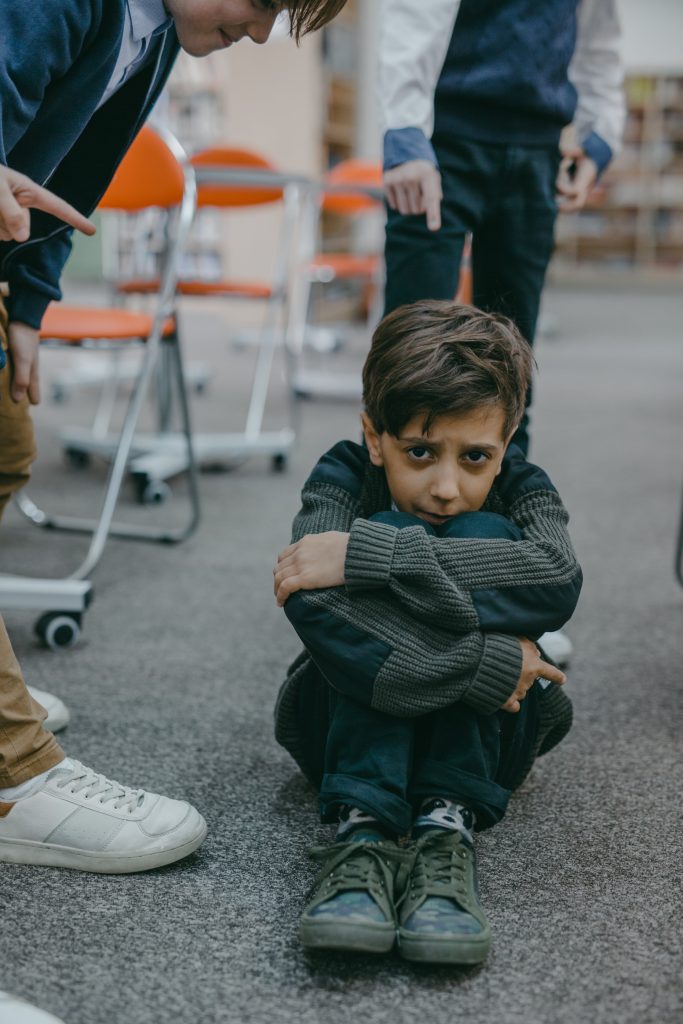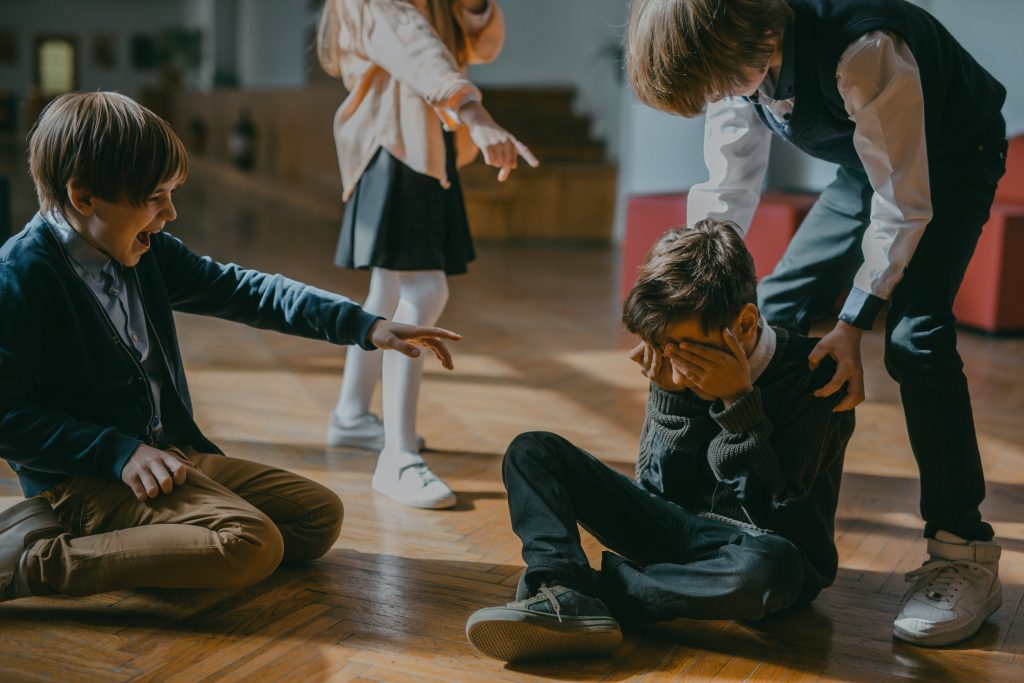Introduction
School bullying, a pervasive and insidious issue, casts a dark shadow over the educational experience of countless students worldwide. Far from being a rite of passage, bullying manifests in various forms and can have profound and lasting effects on both the victim and the perpetrator. This comprehensive exploration delves into the dark side of school bullying, examining its different facets, the various forms it takes, its root causes, and the devastating consequences it can have on individuals and the broader educational environment.
1. Defining School Bullying
1.1. Understanding the Dynamics
School bullying is not a singular act but a complex social phenomenon involving repeated aggressive behavior directed towards an individual who is unable to defend themselves. It takes on various forms, including physical, verbal, relational, and cyberbullying, and often involves an imbalance of power between the bully and the victim.
1.2. Different Forms of Bullying
- Physical Bullying: Involves physical aggression, such as hitting, kicking, or any form of bodily harm.
- Verbal Bullying: Includes name-calling, taunting, and the use of derogatory language to belittle or humiliate the victim.
- Relational Bullying: Focuses on damaging a person’s relationships or social standing, often through exclusion, gossip, or spreading rumors.
- Cyberbullying: Utilizes digital platforms to harass, threaten, or embarrass individuals, amplifying the impact through the reach and permanence of online communication.

2. Root Causes of School Bullying
2.1. Social Dynamics and Power Imbalance
Bullying often stems from complex social dynamics within schools, where a power imbalance is exploited. Those who engage in bullying behavior may seek to establish dominance, elevate their social status, or divert attention from their own insecurities.
2.2. Family and Environmental Factors
Family environments and community dynamics can contribute to the development of bullying tendencies. Children who witness aggressive behavior or experience violence at home may replicate these patterns in their interactions with peers.
2.3. Impact of Social Media and Technology
The advent of technology has brought about new challenges, with cyberbullying emerging as a prominent concern. The anonymity afforded by online platforms and the rapid dissemination of information amplify the harm inflicted on victims.
3. The Psychological Toll on Victims
3.1. Emotional Consequences
Victims of bullying often grapple with a range of emotions, including fear, anxiety, and depression. The persistent nature of bullying can erode self-esteem and create a pervasive sense of vulnerability.

3.2. Academic Impact
Bullying can have a detrimental impact on a student’s academic performance. The stress and emotional turmoil resulting from bullying may lead to a decline in concentration, motivation, and overall achievement.
3.3. Long-Term Effects on Mental Health
The effects of bullying can extend far beyond the school years, contributing to long-term mental health issues such as post-traumatic stress disorder (PTSD), increased risk of anxiety and depression, and even suicidal ideation.

4. The Perpetrator’s Perspective: Understanding the Cycle
4.1. Psychological Factors
While victims bear the brunt of bullying, understanding the motivations of the perpetrators is crucial for breaking the cycle. In some cases, bullies may themselves be victims of abuse or may exhibit signs of low self-esteem and insecurity.
4.2. Social Learning and Modeling Behavior
Observational learning plays a significant role in the development of bullying behavior. Children may replicate actions they witness, either in their immediate environment or through exposure to aggressive behavior in media and popular culture.
4.3. Intervention and Rehabilitation
Breaking the cycle of bullying requires not only addressing the immediate behavior but also providing intervention and rehabilitation for the perpetrators. Strategies such as counseling, mentorship, and education on empathy and conflict resolution can contribute to meaningful change.
5. The Role of Schools and Educators
5.1. Creating a Safe and Inclusive Environment
Schools play a pivotal role in preventing and addressing bullying. Establishing a culture of respect, inclusivity, and open communication can create an environment where bullying is less likely to thrive.
5.2. Implementing Anti-Bullying Programs
Structured anti-bullying programs, encompassing education on empathy, conflict resolution, and the consequences of bullying, can be effective in curbing these behaviors.
5.3. Teacher Training and Awareness
Educators must be equipped with the knowledge and skills to identify and address bullying. Training programs that focus on early intervention, empathetic communication, and creating a supportive classroom environment are essential.
6. Legal and Ethical Considerations
6.1. Legal Frameworks Against Bullying
Many jurisdictions have implemented legal frameworks to address bullying in schools. These may include anti-bullying laws, regulations, and policies that mandate reporting, investigation, and consequences for bullying behavior.
6.2. Ethical Responsibilities of Schools
Beyond legal obligations, schools have ethical responsibilities to protect the well-being of their students. Ethical considerations involve fostering an environment that values diversity, promotes empathy, and actively works against discrimination and harassment.
7. Community Involvement and Parental Roles
7.1. Community Support Networks
Engaging the broader community in anti-bullying efforts is crucial. Community organizations, local leaders, and parents can collaborate with schools to reinforce messages of tolerance and respect.
7.2. Parental Involvement
Parents play a significant role in shaping their children’s attitudes and behaviors. Encouraging open communication, modeling positive interactions, and actively participating in school initiatives are key components of effective parental involvement.
8. The Impact of Bullying on School Culture
8.1. Creating a Positive School Culture
Bullying has a ripple effect on the overall school culture. A culture of fear and intimidation hampers the learning environment, stifles creativity, and contributes to a climate of mistrust.
8.2. Bullying as a Reflection of Broader Societal Issues
School bullying is often symptomatic of larger societal issues, including systemic inequalities, discrimination, and a lack of empathy. Addressing bullying requires a holistic approach that acknowledges and confronts these broader challenges.
9. International Perspectives on School Bullying
9.1. Global Variations in Bullying Rates
Bullying is a global issue, but its prevalence and manifestations vary across cultures and regions. Understanding these variations is essential for developing context-specific interventions.
9.2. Cross-Cultural Approaches to Prevention
International collaboration allows for the sharing of best practices and the development of cross-cultural approaches to preventing and addressing bullying. Learning from successful strategies in different contexts can inform more effective interventions globally.
10. Moving Towards a Bully-Free Future
10.1. Empowering Bystanders
Empowering bystanders to intervene and report incidents of bullying is a critical component of prevention. Creating a culture where students feel a collective responsibility for each other’s well-being can shift the power dynamics inherent in bullying.
10.2. Holistic Education on Emotional Intelligence
Incorporating emotional intelligence education into the curriculum can foster empathy, self-awareness, and interpersonal skills, providing students with the tools to navigate conflicts and build positive relationships.
10.3. Promoting Inclusivity and Celebrating Diversity
Cultivating an inclusive environment that celebrates diversity helps challenge stereotypes and prejudices, creating a space where bullying is less likely to thrive.
Conclusion
School bullying represents a dark stain on the fabric of education, impacting the lives of individuals and shaping the broader cultural dynamics within schools. Understanding the various forms of bullying, the root causes, and its far-reaching consequences is essential for implementing effective prevention and

intervention strategies. Schools, educators, parents, and communities must collaborate to create environments that prioritize empathy, respect, and inclusivity. Only through concerted and sustained efforts can we hope to eradicate the dark side of school bullying, ensuring that every student has the opportunity to learn and grow in a safe and nurturing educational environment.
